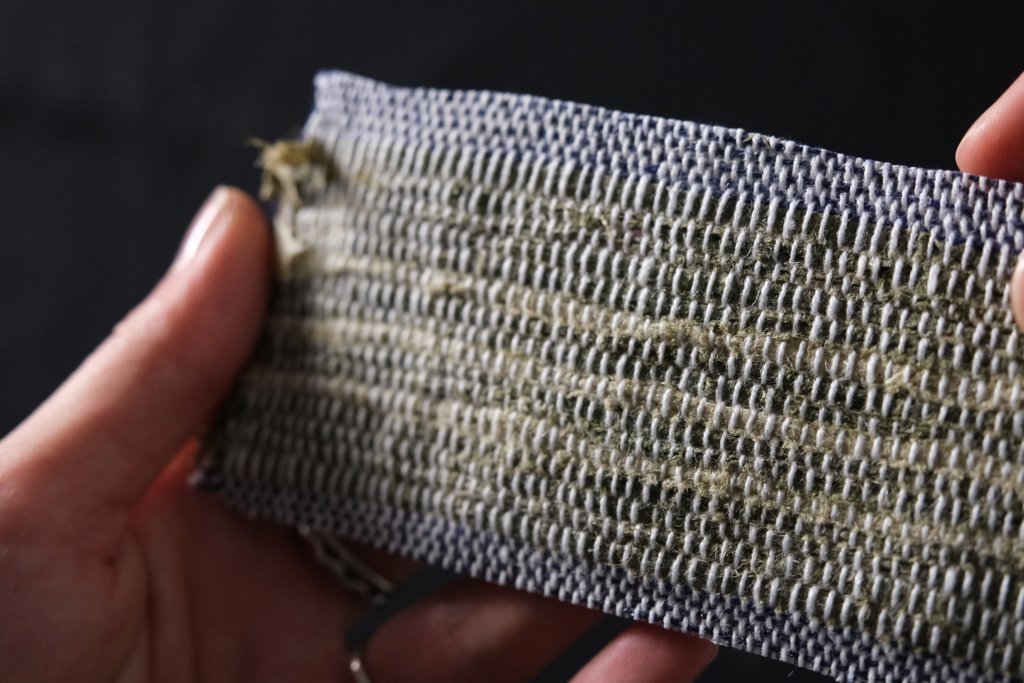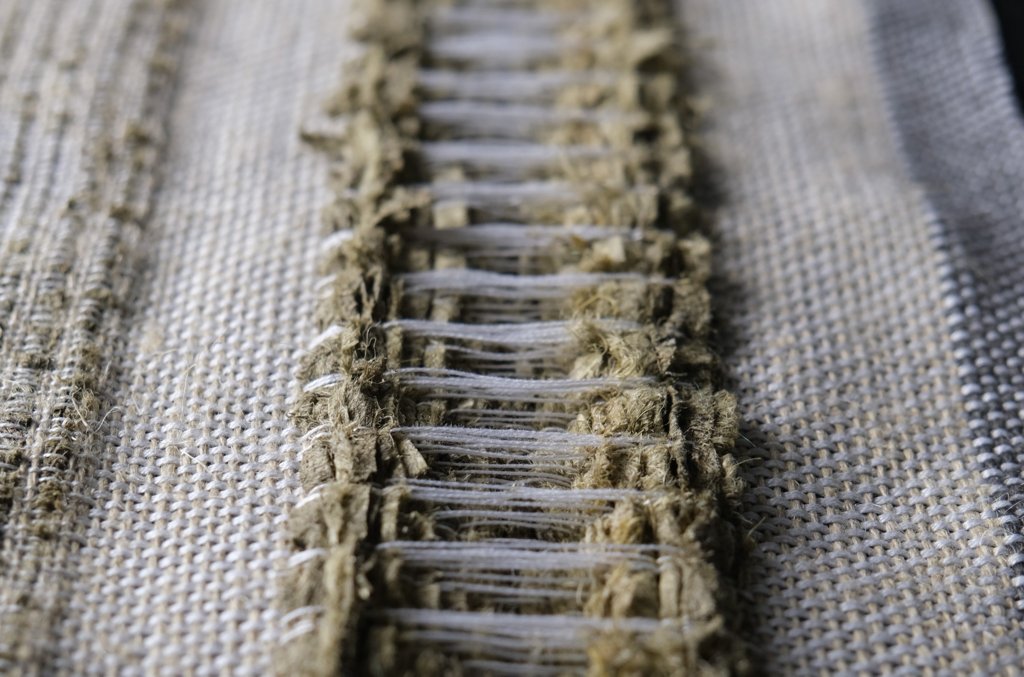Interwoven
Julie Heij
More-than-human design is an emerging design field that extends the focus of design processes beyond human-centric perspectives, actively including nonhumans. This offers design researchers the lens to consider a rich set of complex and nuanced concepts. Current theoretical frameworks are increasingly well-developed, however designers can struggle applying them in their processes. Through weaving handcrafted grass paper on two looms, a TC2 Jacquard loom and an Erica Louët loom, I explored the more-than-human concept of biographies: the relation between designer and design and how this inscribes the world [1]. This resulted in over 50 samples that have all been documented and analyzed.
[1] Ronald Wakkary. 2021. Things we could design: for more than human-centered worlds. The MIT Press, Cambridge, Massachusetts.

The samples are documented in a template, and can be seen to express time through their making processes, materiality, and processes of decay. Since I see a strong link between time and biographies, I used the concept of time as a lens to analyze the making journey and the samples. Through a thematic analysis, this formed into three themes that helped me better understand biographies: Negotiations, Plurality of Time, and Translations.
The theme of Negotiations refers to developed strategies to negotiate with tools and materials, which shapes my relations to my samples and therefore the biography.
The Plurality of Time refers to the complex and intersecting temporalities that helped develop a more relational understanding of the human and nonhuman actors that play a part in the biographies. The relationality is also reflected in the third theme; Translations. Translations are the reflections of nonhuman agentic capacities in materials.


It is important to note that these themes were formed from a first-person perspective, and therefore reflect what was important to the author. Including all observations was hard to mould into this format of research. For others, different topics might have arisen than those discussed here.
I acknowledge that there are other, interesting ways of understanding biographies, worthy of exploration. This could help in the next steps to understanding how we are interwoven with the things around us and the things we design, and continue to develop understandings of concepts we find hard to grasp through making.

Share
Contacts
- -
- -Kristina Andersen

